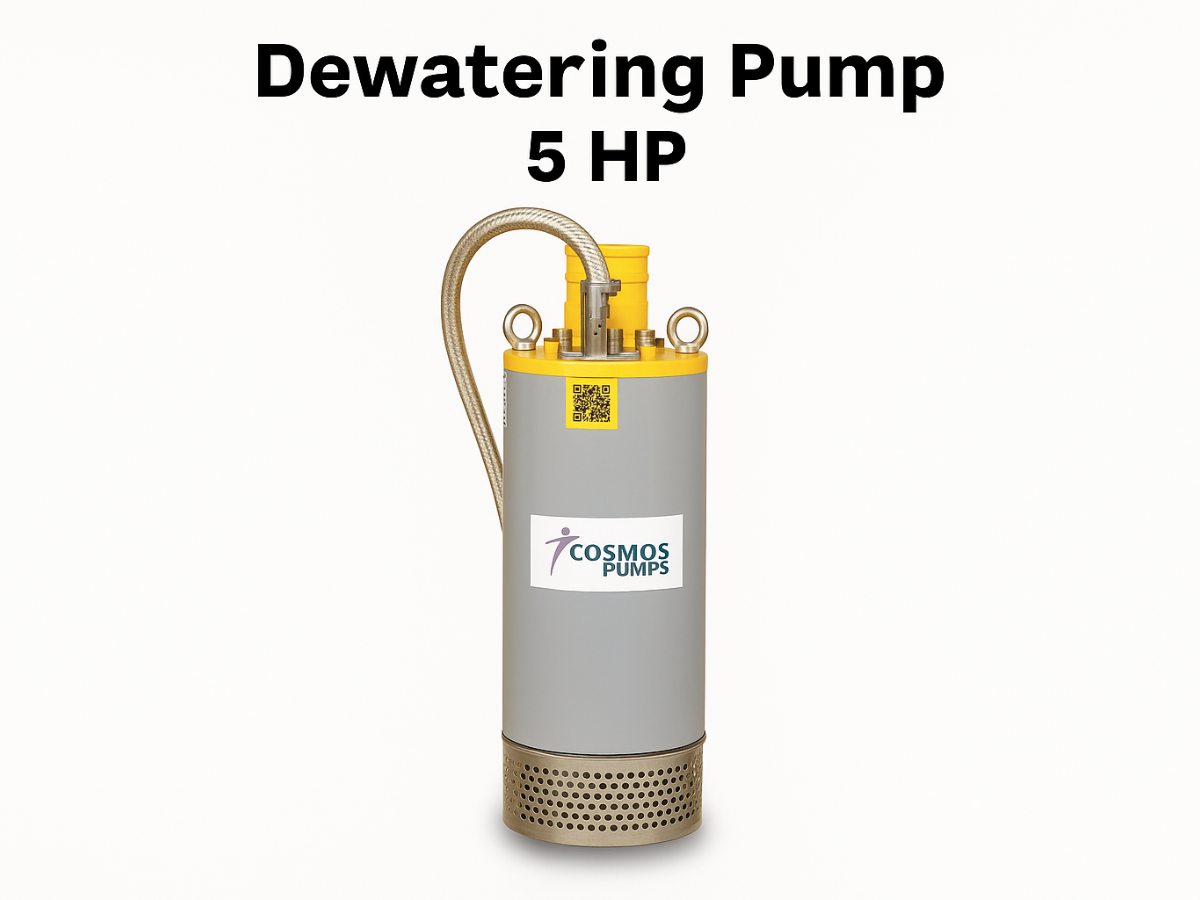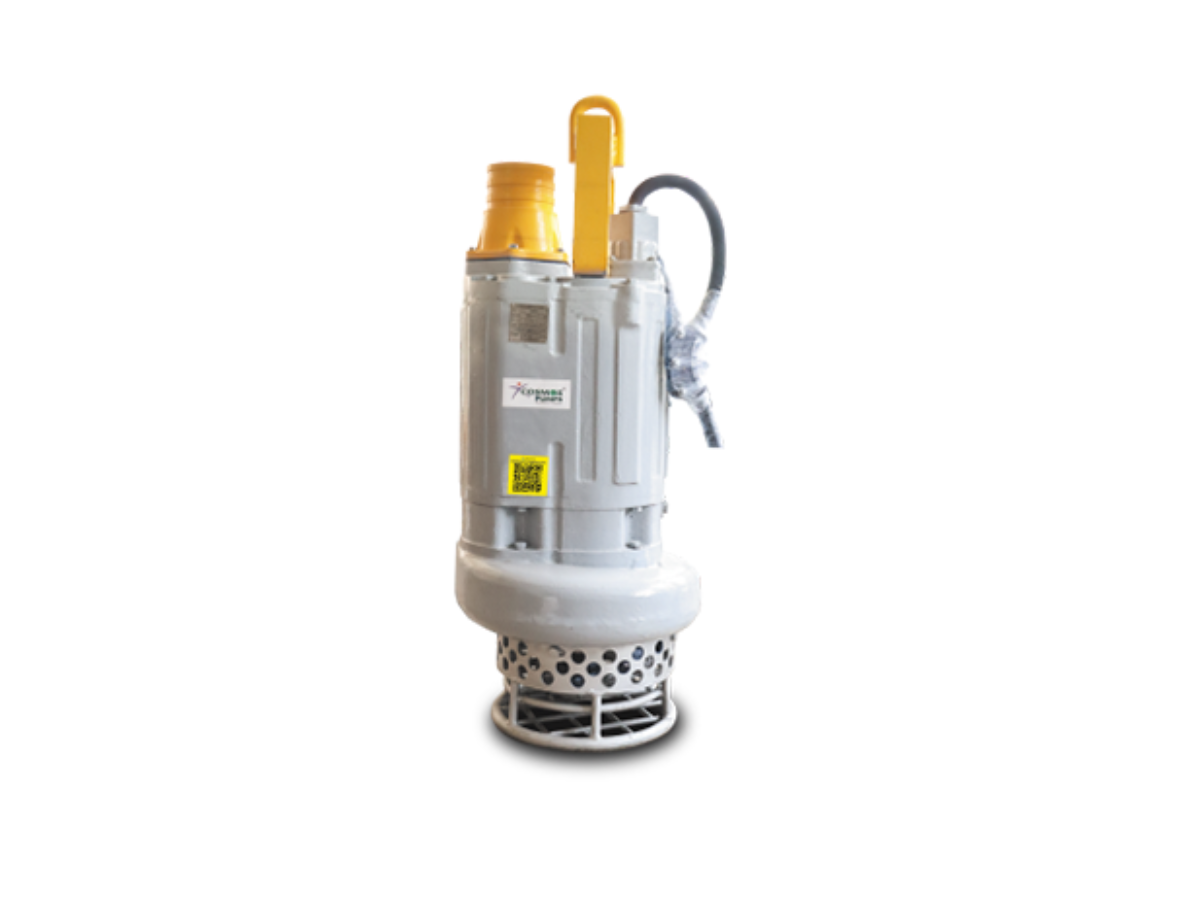
Basement flooding is a common challenge that impacts many households across the world. Such cases can result in property damage, structural damages, etc. Selecting the right Submersible Pumps and placing these is important to attain the best results –
- Location – This is the key to place the pump in the most effective spot. You must place your pump in the lowest part of the flooded area. This can be your basement, driveway, etc.
- Power supply – It is best to connect the pump to a reliable power source before deployment. This can be your home’s main electric supply or a portable generator.
- Operation – Once setup, the pump moves water from the flooded area to the selected drainage area or storm sewer. This easily lowers water levels and its associated damage.
The Smart Choice for Basement Safety: Understanding Submersible Pumps?
Basements are often the key reason for home flooding. These are lowest points in your structure and act as a natural collection point for water seepage. When coupled with issues like poor drainage around the house, high water tables, cracks in foundation, poor maintenance and upkeep, the same can be flooded as soon as it rains. This may result in minor dampness to extreme flooding. When left unmanaged, it can result in extensive damage to your property. To overcome this challenge, choosing an automatic submersible pump is important. Hence, the right Submersible Pumps are important to safeguard your basement and valuables. These pumps offer the following benefits –
- Efficiency – Submersible pumps help to move water quickly and efficiently. This reduces the risk to your property due to waterlogging.
- Noise-free operation – The best pumps are noise-free. This is crucial to your comfort and wellbeing especially in residential settings.
- Ease of use – Top pumps are easy to use and operate. These also have automatic activation which ensures that when water reaches a certain level, the water is pumped out of your home. This is why these are suitable for gardens, basements, etc.
- Durable – Such pumps are ideal for pumping out clean and muddy water effectively. The top pumps are designed to be durable and long-lasting. This makes it a wise choice for all homes.
Frequently Asked Questions
- Can submersible pumps be used in any type of flooding situation?
It is possible to use submersible pumps in any type of flooding situation but is largely dependent on the type of pump, flooding type, clean rainwater or muddy flooding, etc.
For instance – for clean rainwater flooding, it is best to choose a drainage submersible pump. A sump pump is best for handling basement flooding.
Sewage submersible pumps are recommended for clearing muddy or solid waste matter.
- Can submersible pumps prevent basement flooding?
Sump submersible pumps help to prevent basement flooding and can be installed in sump pit. These can automatically activate when the water enters the pit.
Thus, this can be used to pump water away from your building. These are also useful for handling water ingress during heavy rains, raising groundwater and plumbing leaks.
- Can a submersible pump handle sewage and dirty water?
Only specific types of pumps can handle the muddy water –
- Slightly muddy water can be managed through a drainage or utility pump.
- Muddy and slurry water can be managed using trash or dewatering pumps.
- Sewage water with solids can be managed through a sewage dewatering pump.
However, using a regular Submersible pump for thick water or muddy one will clog the pump and damage its motor.
- Should I get a pump with an automatic or manual float switch?
Here are the features of the both –
- An automatic float switch
-
- Ensures easy and hands-free operation based on the water levels.
- Is suitable for basement or other unattended areas.
- This lowers the risk of overflow.
- Is more expensive than standard solutions.
- A manual float switch
-
- Requires manual operations and plugging/ unplugging.
- Suitable for emergency usage.
- The risk of overflow is often high especially if not monitored closely.
- Has a lower initial cost.
Depending on this, it is best to use an automatic float switch to ensure round-the-clock protection.
- What size submersible pump do I need for my flooded basement?
The size and capacity flow rate of the pump is dependent on the following aspects –
| Factor | Guide | Recommended pump size |
| Area of your basement | Larger area = Larger pump capacity | > 1 HP |
| Water inflow rate | Fast water entry needs higher capacity | Choose pumps with high GPH or LPM |
| Vertical discharge height | The greater the head, the larger the pump size | Depends on the size of the vertical flow |
| Typical household use | Depends on the size of your home | For households – 0.5 – 1 HP sump pump needed |
| Heavy flooding | Higher the water table, higher the pump size | > 1 HP |
Thus, a 0.5 – 1 HP pump typically pumps out 3000-8500 litres per hour. The higher capacity pumps operate at a higher speed.
Such a pump is suitable for pumping water at a 5-7 meters head.

